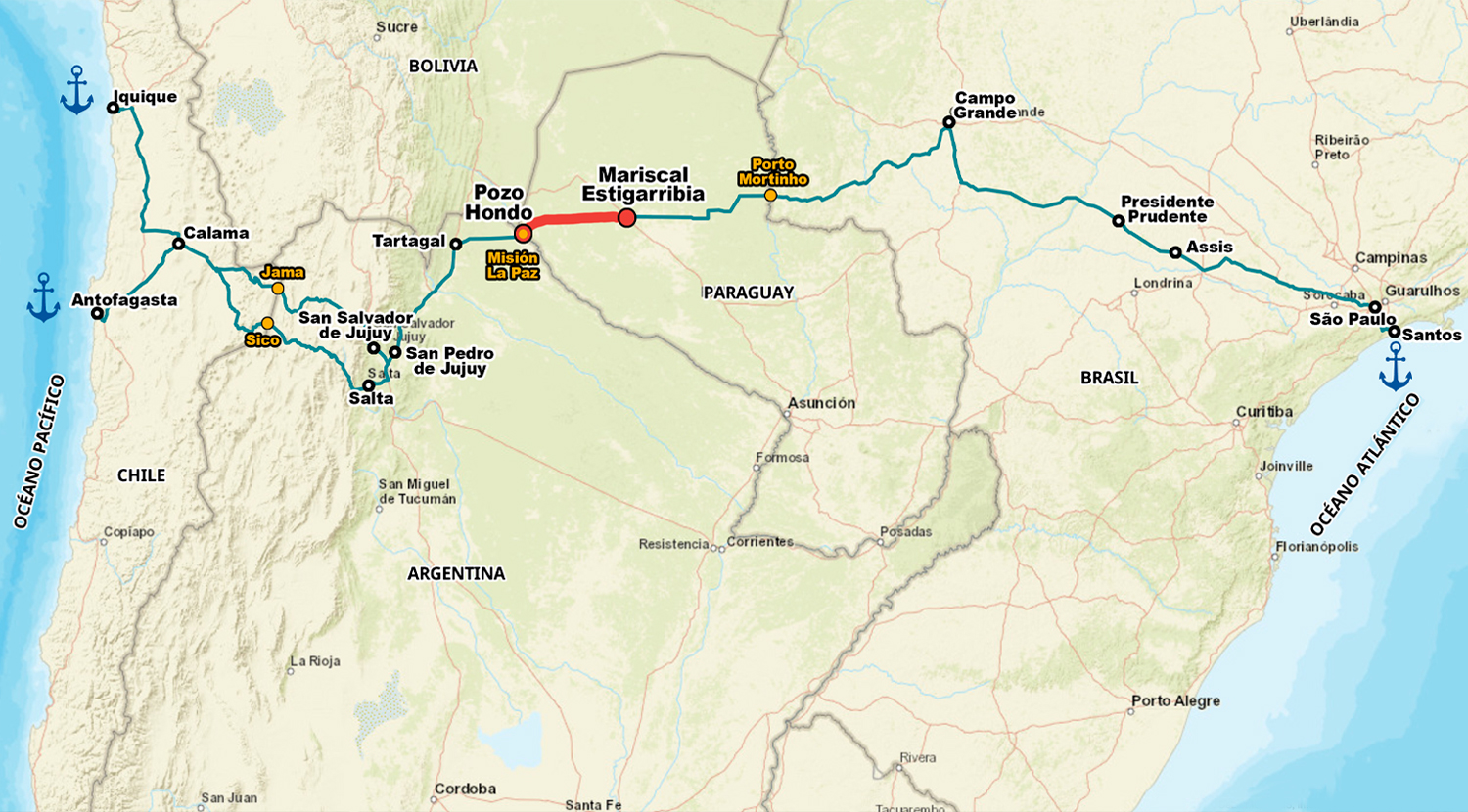RIO DE JANEIRO, BRAZIL – Several Bolivian media expressed concern because Bolivia is not included in the Bioceanic Corridor plan designed by Paraguay.
When consulted by one of the newspapers that echoed the issue, the Bolivian Minister of Public Works, Édgar Montaño, pointed out that it is only a proposal.
“Bolivia is not being left out of the Bioceanic Corridor. There is a proposal from Paraguay not to use our roads”, was part of his argument, adding that the Bolivian government continues “working on roads and railways” since his country “is the main bimodal node of the Bioceanic Corridor”.
Meanwhile, one of the Bolivian headlines expresses that Paraguay “is working to displace Bolivia” in the project and highlights that “the roadblocks play against Bolivia”.

In this sense, the president of the National Chamber of Exporters of Bolivia (Caneb), Danilo Velasco, said through one of the media that “the Paraguayan alternative is worrying because due to the delay of the Central Bioceanic Railway Corridor that would connect Brazil with Bolivia and Peru, the Paraguayan offer represents competition in terms of cargo absorption capacity”.
Raúl Cano Ricciardi, Paraguay’s vice-minister of the National Chancellery, told Última Hora that there was no exclusion and that Bolivia had also participated in the negotiations of the South American Council of Infrastructure and Planning (Cosiplan), which depends on the Union of South American Nations (Unasur).
That is the body where political and strategic discussions are held to plan and implement the integration of South America’s infrastructure and where it was agreed that Paraguay would lead the project, including the connections with Argentina and Brazil.
According to Cano Ricciardi, this was approved because emerging markets were taken as a basis “with a geostrategic vision”. He explained that the Bioceanic Corridor is framed within the Capricorn axis and the Integration and Development axes to connect with Asia.
“Probably the new authorities feel displaced, but now we cannot change the route; it will pass close to Bolivia. Besides, other bi-oceanic corridors are being worked on. We were a little surprised by the inconvenience, but it took us a long time to do this work,” said Paraguay’s Ministry of Foreign Affairs representative.
And he added: “There is no exclusion, there are several corridors, but Paraguay did a good job obtaining financing. There is no displacement, Bolivia will be able to use the corridor, and it was decided to implement it without excluding any country. We did it intending to merge markets and with a geostrategic vision.”
The Ministry of Public Works of Paraguay socialized last days the progress of the road plan, indicating that the first section, which connects Carmelo Peralta, Department of Alto Paraguay, with Loma Plata, Department of Boquerón, is already completed. This first stage has a total length of 277 km and costs US$43 million.
Next, the second section covers the area known as Cruce Centinela to Mariscal Estigarribia, in Boquerón, with an investment of US$110 million, which has not yet been put out to tender, while the National Congress has already approved the third section.
This phase would cover the access to Mariscal Estigarribia to Pozo Hondo, both in Boquerón, with a total of US$354 million to be executed. In addition, it already has Fonplata financing and is expected to be implemented in the second half of 2022.
The Bioceanic Road Corridor will start from Porto Murtinho in the state of Mato Grosso do Sul in Brazil and will cross the Paraguay River through a bridge that will connect this Brazilian region with Carmelo Peralta and will later connect to Pozo Hondo on the border with Argentina.
With information from Última Hora

